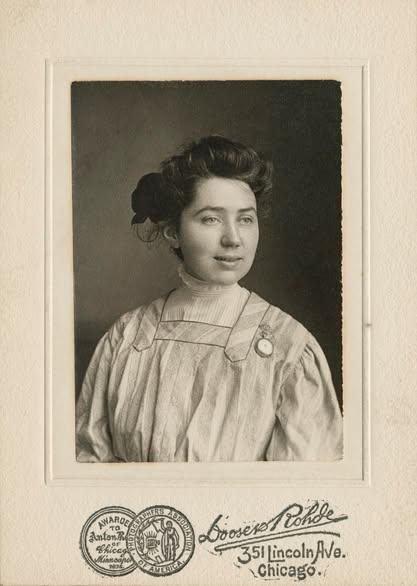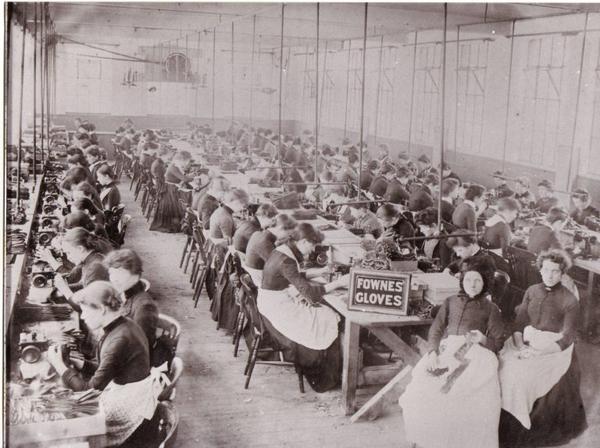Rows of women sewing gloves at a factory similar to the one where Agnes worked. Worcester, UK
Late 19th Century, (equalvisioncic.co.uk)
But, though we all seemed happy at first," Agnes wrote later, "gradually it dawned dimly within us that we were not beating the piecework system; it was beating us.
Every week when they got their paychecks, fifty cents was deducted for the use of their sewing machines. They also had to buy their own needles and sewing machine oil. And the foremen harassed them with petty rules such as not letting Agnes sit with her sister at lunch because she worked in another room.
The company continually looked for ways to increase profits and decided to try and increase production by subdividing the work. Each worker would be assigned to sew one smaller part of each
glove. The women feared a decrease in pay and knew this arrangement would make their work more monotonous.
One group of women, the banders were asked to try the
new system. They refused and walked out.
Anne's group decided, "We should be loyal to the girls who had walked out, and we told the
foreman that if the company tried to put new girls in the places of the banders, we would walk out, too!"
The strike started on Saturday and by Monday company management decided to drop the plan and everyone went back to work.
"We had taken a bold step," Anne wrote later. "Almost with spontaneity we had acted in support of one another. Now we all felt tremulous, vulnerable, exposed. With no regular organization, without even a qualified spokesman, how long would such unified action last?"
With that thought, Agnes eagerly attended at meeting of the male glove-cutters union the next night along with other women glove makers and within three days most of the women had signed up to join the union. Before the end of the week, management fired a cutter and the men talked of striking in
protest.
"We were young and inexperienced in union procedure; and, as I look back now," Agnes wrote, I see that because of that
lack of experience, and because we were newly organized and therefore anxious to use our new organization, we did a rash thing. We started a strike movement in protest at the discharge of the cutter and also for the redress of our own grievances."
Agnes emerged as a leader of the group, though prior to this she had not been outspoken. "No more machine rent; no paying for needles; free machine oil; union shop; raises for the cutters who were paid the lowest wages,” she said.
How did a quiet young woman's belief in united action became a loud and powerful force for working women that still echoes today? Read the rest of the story here: click and scroll down...




